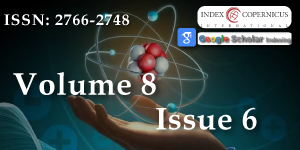An Alternate Presentation of a Generalization of the Lorentz Transformation to Allow Acceleration of a Coordinate System
Main Article Content
Abstract
The traditional version of the Lorentz transformation is used to relate the coordinates of an event (a point in space-time) between different inertial coordinate systems in the absence of any gravitational effects. It is limited to those cases in which both reference frames are inertial, so they have a constant velocity relative to each other. By utilizing postulates regarding the equivalence between coordinates measured in an accelerating reference frame and coordinates measured in a reference frame instantaneously at rest with the accelerating frame, together with the traditional version of the Lorentz transformation, it is possible to derive a generalized version of the transformation applicable to the case in which one of the coordinate systems is accelerating. This is not new, and this report does not produce any new final conclusions. What is different in this report is the style of analysis and the format in which the relevant equations are presented. The advantage is a simpler way to derive conclusions, albeit the conclusions are not new. The conventional approach derives basis vectors (a tetrad) for an accelerating system from assumptions regarding orthonormality, being nonrotating, and some assumption about relative orientations with an inertial system. Then event coordinates in the accelerating system are defined in terms of expansions in basis vectors. The approach used here starts by deriving coordinate transformations directly, without any need for basis vectors, by utilizing a to-be-determined inertial reference frame. This reference frame is one of the entities to be solved but equations for it are derived and very simple. Having solved that part, the coordinate transformation is established. From the coordinate transformation, basis vectors are shown to be tangent vectors to coordinate curves and the equations for them are very simple. By defining suitable quantities and introducing suitable notation, the generalized version of the Lorentz transformation can be written in a way that is almost as simple as the traditional (constant velocity) version when calculating the coordinates of an event in an inertial system when given the coordinates in an accelerating system. Unfortunately, calculations of the inverse transformation, i.e., calculating the coordinates in the accelerating system when given coordinates in an inertial system, are more cumbersome. Worse yet, while a suitably selected history and future ensures the existence of an inverse transformation, there can exist space-time points for which it is not unique. However, the metric tensor can be derived in the accelerating system for the general case and is included in this report. This is used to calculate time dilations and Doppler effects that are outside the scope of inertial coordinate systems and have gravitational interpretations.
Article Details
Copyright (c) 2025 Edmonds LD.

This work is licensed under a Creative Commons Attribution 4.0 International License.
1. Misner CW, Thorne KS, Wheeler JA. Gravitation. Princeton University Press; 2017. Available from: https://fma.if.usp.br/~mlima/teaching/PGF5292_2021/Misner_Gravitation.pdf
2. Jackson JD. Classical Electrodynamics. 2nd ed. John Wiley & Sons, Inc.; 1975;516. Available from: https://archive.org/details/ClassicalElectrodynamics2nd
3. Goldstein H. Classical Mechanics. Addison-Wesley Publishing Company; 1965;187-191.
4. Arfken G. Mathematical Methods for Physicists. 2nd ed. Academic Press; 1970;151.
5. McMahon D. Quantum Field Theory Demystified. McGraw-Hill; 2008;8. Available from: https://archive.org/details/quantumfieldtheo0000mcma
6. Stratton JA. Electromagnetic Theory. McGraw-Hill; 1941;77. Available from: https://ia801607.us.archive.org/18/items/electromagnetict031016mbp/electromagnetict031016mbp.pdf
7. Adler R, Bazen M, Schiffer M. Introduction to General Relativity. 2nd ed. McGraw-Hill; 1975;7. Available from: https://www.scirp.org/reference/referencespapers?referenceid=497321
8. Penrose R. The Emperor’s New Mind. Oxford University Press; 1989;200.
9. Lawden DF. An Introduction to Tensor Calculus and Relativity. Halsted Press, John Wiley & Sons, Inc.; 1975;22 (problem 10). Available from: https://archive.org/details/an-introduction-to-tensor-calculus-and-relativity-derek-f.-lawden

